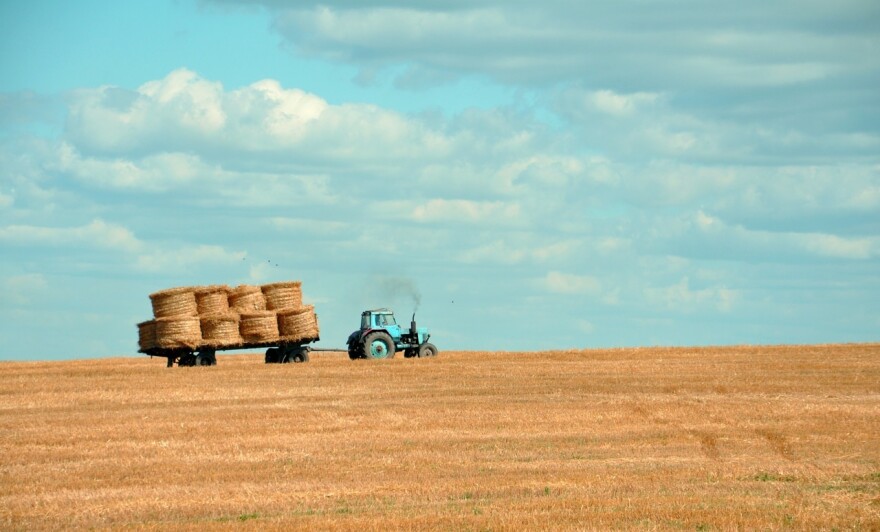One easy way to start an argument these days is to bring up climate change. Yet when several dozen farmers and researchers gathered to talk about it last Friday in Great Falls, there was virtually no argument. That’s because the group that sponsored the event, the Montana Farmers Union, accepts climate change as a fact and because the event, called Plowing Forward, was not focused on placing the blame for it, but rather on its effects, especially on agriculture.
"We had the worst hail year ever, in 2013," says Ron de Yong, director of the Montana Department of Agriculture, “the year before that, we had a really dry year in Montana, and we burned up over a million acres in southern Montana on farms and ranches down there. The year before that we had an extremely wet spring and we flooded in Montana and the floods went all the way down the Mississippi. So, we’re seeing some of those events already."
For de Yong, the extreme weather of the past few years has hit home in many ways. Take the state’s Hail Insurance Fund, which reimburses farmers who lose crops to hail damage. In 2013 it paid out nearly twice as much as it took in, in premiums. The department even took out insurance on its insurance, in case it couldn’t cover the total for that year’s hail damage. Even so, de Yong says the hail fund appears to be in good shape going forward.
"You know if you had a string of catastrophic years, of course you’d be taking a look at it, but even in good years, bad years, the program is not going to change very much. You know, with the reinsurance we can even cover a few catastrophic years in a row."
Still de Yong is hoping there aren’t more than a few catastrophic years in a row.
But a Research Leader from the U.S. Department of Agriculture calls extreme weather "the new normal".
Justin Derner heads the USDA’s Climate Hub for the Northern Plains States. It’s his job to explain to growers how the weather is changing, and show them ways they can adapt to the changes.
"We’re seeing this oscillation in wet years, such as 2011, when it was very wet and flooding occurred, followed immediately in 2012 by one of the largest widespread flash droughts, and so we’re seeing producers look at the variability in terms of these year-to-year, and within year events that they haven’t really experienced in the past."
Derner steers around the whole debate over why this is happening; whether it’s due to carbon dioxide emissions or some other cause. He says that’s a topic for other people to hash out. His role, he says, is to show farmers that the changing climate means they have choices to make, whether to time their planting differently, or even plant different crops altogether.
"I think we’re already seeing some of the producers change their crops, changing from wheat to corn because there is an increase in precipitation in certain areas. We’re also seeing other producers looking at much more niche crops: peas, lentils, canola, that might be very useful for a certain geographic area because of a change in conditions."
Climate change doesn’t affect just those crops farmers want to grow, it also affects the plants they don’t want. One in particular is cheatgrass, an invasive weed that has taken over large parts of the West, and is apparently thriving because of warmer temperatures and increased carbon dioxide.
Fabian Menalled, a climate researcher at Montana State University, is studying carbon dioxide’s effect on cheatgrass, and he says the news is not good.
"As we increase CO2 in the atmosphere the plants, cheatgrass, decreases the concentration of lignin and mineral content. And when it does that, it has more complete combustion, and releases more heat. So this cycle that we see of cheatgrass enhancing the fire dynamic is actually related to the concentration of CO2 in the atmosphere. And the prediction is if Montana keeps increasing the temperature and dry conditions, we will be increasing this cycle of fire," Menalled says.
The bottom line from this conference is that growers need to stay flexible, even nimble, in the face of weather that continues to break records. The old ways of doing things might not be good enough anymore.


